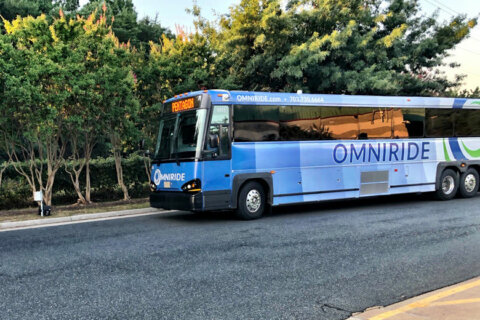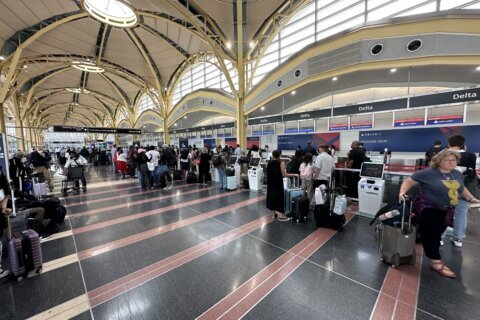WASHINGTON — The advent of ride-booking (or “ride-sharing”) services, such as Lyft and Uber, has revolutionized how people earn money and, of course, how they get from point A to point B.
It’s also raised questions about how parents can get around with their little ones safely and legally.
The answers, unfortunately, are not abundantly clear: Child-restraint guidelines vary nationwide.
“It can be a challenge to figure out what the rules are for transporting kids in a ride-share vehicle, as the laws vary from state to state,” said Justin Owens, a research scientist at the Virginia Tech Transportation Institute’s Center for Vulnerable Road User Safety.
“Where the confusion comes in is that in most of those states, it is unclear whether those laws also include ride-share vehicles — if ride shares are counted as taxis or not.”
For instance: Maryland and D.C. are among jurisdictions that say it’s legal for taxi drivers to drive children without child safety seats, Owens said. “However, they are also not clear whether that same exclusion counts for ride-share drivers or not.”
In an effort to give parents some clarity, Owens and his colleagues at Virginia Tech — and at the Texas A&M Transportation Institute — have published an online guide that details each jurisdiction’s rules.
Virginia’s laws for child safety seats in ride-booked vehicles
Maryland’s laws for child safety seats in ride-booked vehicles
D.C.’s laws for child safety seats in ride-booked vehicles
On Thursday, they also released a study that researched child ridership and safety seat use in ride-booked vehicles.
How parents use ride-booking apps with their kids
The researchers conducted focus groups of parents and ride-booking-app drivers in Texas, as well as a nationwide internet survey of about 1,100 parents with children younger than 5. They measured the safety attitudes and practices of parents who use ride-booked vehicles with their children, as well as any barriers to appropriate child seat use. Some of their findings include:
- Over a third of parents reported using ride-booking services with children.
- Up to half of parents reported not using appropriate child-safety seats when using a ride-booking service with their children.
- Three-quarters of drivers in focus groups reported giving rides to young children, and half of these did not use child seats.
- Parents would like to be able to use child seats with ride-booking services, but availability and uncertainty are barriers.
“Parents, by and large, follow child safety laws,” Owens said. “They certainly use appropriate child seats when they transport their children in their personal vehicles.
“But it’s very difficult — especially as child seats are getting bigger and heavier to travel with them. So I think that’s why, in many cases, parents reported not having access to a child seat when they were traveling.”
In certain larger cities like New York, he said, ride-booking companies actually have set up family programs in which a child seat can be requested from the driver, “but in most other markets it is basically hit or miss whether the driver has [a seat] along.”
For now, Owens said, it’s best for parents to take the responsibility of having appropriate child restraints ready when using such services.
Their work was funded by the Safety through Disruption University Transportation Center, a collaboration involving the Virginia Tech Technical Institute, the Texas A&M Transportation Institute and San Diego State University.
WTOP’s Dick Uliano contributed to this report.







